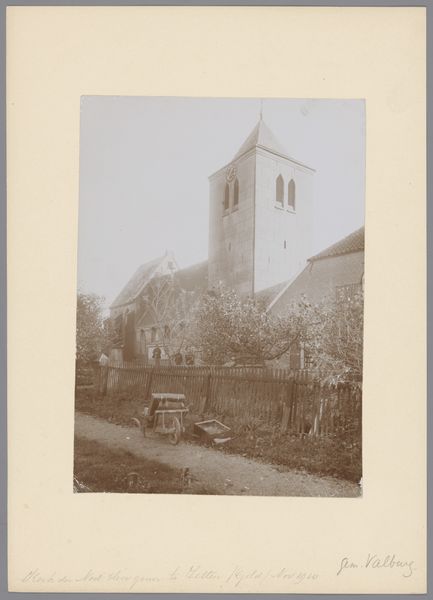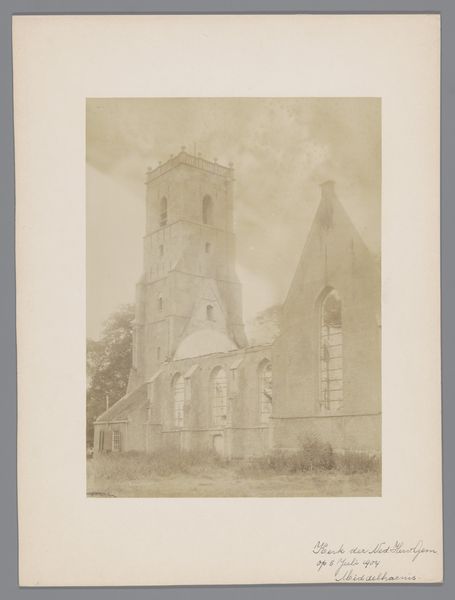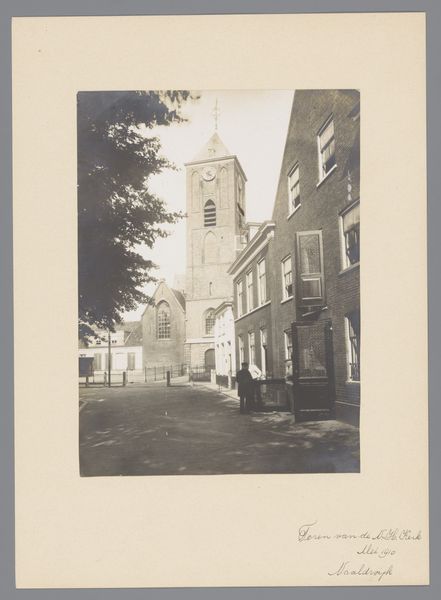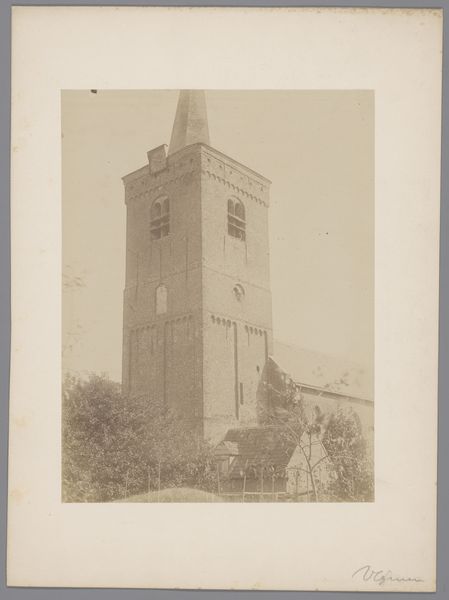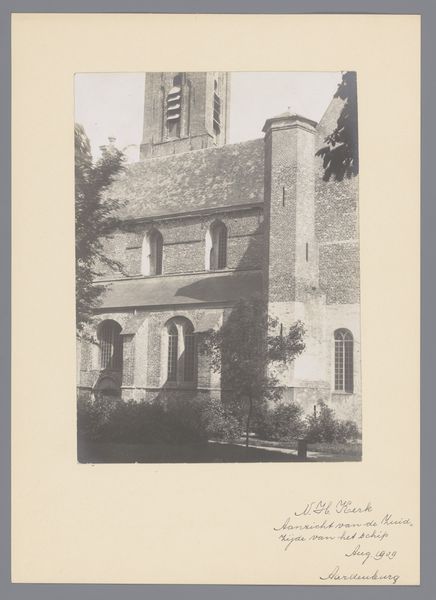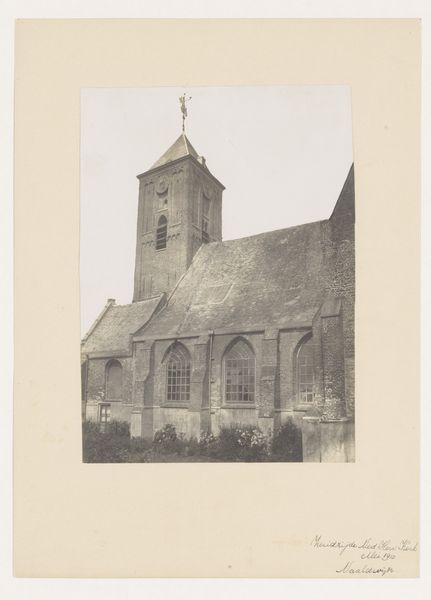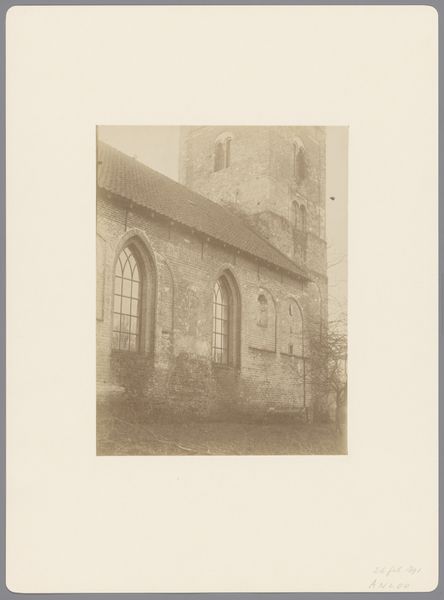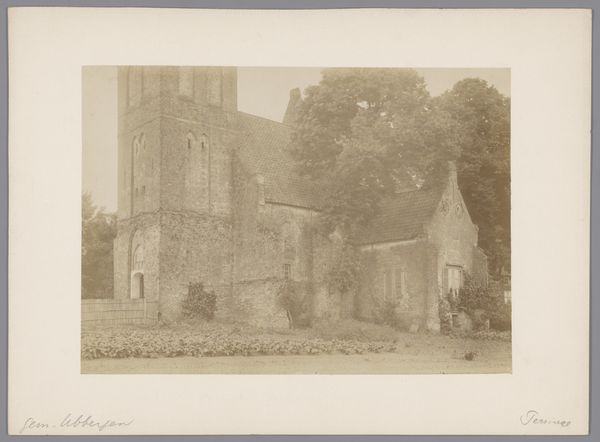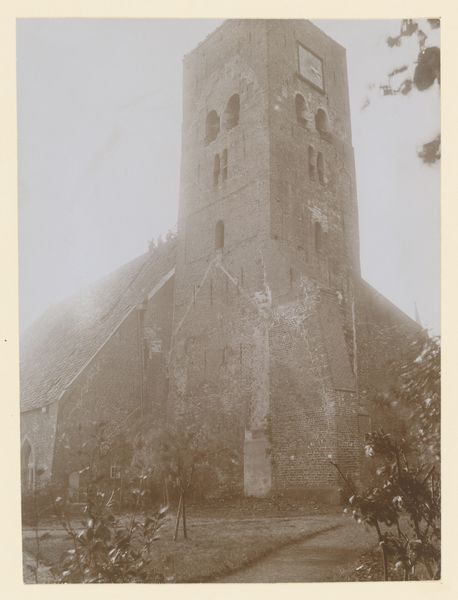
print, etching
# print
#
etching
#
landscape
#
realism
Dimensions: 399 mm (height) x 277 mm (width) (plademaal)
Curator: This etching by Max Kleinsorg, created in 1894, depicts the Wartburg Castle. Notice the realism in the stone textures and the sky rendered with delicate lines. Editor: It has a solemn and fortress-like presence; the stone seems incredibly dense. I'm struck by the almost overwhelming impression of history embedded in these walls. Curator: Indeed. The Wartburg has a rich social history, notably tied to Martin Luther's exile and his translation of the New Testament here in the early 16th century. This made the castle a national symbol during the rise of German nationalism in the 19th century. Editor: The symbolism is layered isn't it? The etching technique gives it this grave atmosphere. And the cross on the tower almost functions as a sort of… claim over the landscape, or a pronouncement of its purpose. Curator: Precisely. The choice of portraying it this way—using the printmaking medium to create multiple, potentially reproducible images—served to disseminate this very specific narrative about German cultural identity to a wider public. Editor: So, it becomes less about the physical Wartburg and more about what the Wartburg *means*. It is more than stone and mortar. We're presented with the romantic nationalist imagery around Luther, as the heroic reformer, with the Wartburg elevated. Curator: Right. Furthermore, Kleinsorg was actively participating in this broader movement that sought to construct a unified German historical consciousness, leveraging buildings, artifacts, artworks to shape public memory and a sense of shared cultural heritage. Editor: And, visually, the dominance of stone speaks volumes about resilience, enduring legacy. There is a feeling here about holding strong through generations; that this symbolic interpretation of Wartburg will persist. It is like an ideological brick. Curator: That ideological brick, as you so aptly put it, also influenced museological practices; in Germany but also abroad. As such this art can also be viewed through a museum-historical lens: looking at display narratives and choices museums did or do. Editor: Seeing it this way adds another depth for consideration. How easily symbolic visual ideas get co-opted or adapted. I like how an object can become the container and source for a concept through generations. Curator: Yes, it is definitely thought provoking. Editor: Definitely food for thought on how visual symbols become central points of our common awareness and are woven in political and national storytelling.
Comments
No comments
Be the first to comment and join the conversation on the ultimate creative platform.
